
Asia Africa and Middle East: Japan & South Korea Discovery Cruise
Holland America Line
Visit picturesque ports across Japan and South Korea, including Shimizu, a beautiful town in Mt. Fuji's shadow. An overnight stay gives you extra time to explore Seoul.

Executive Member Benefit
Executive Members receive an annual 2% Reward, up to $1,250, on qualified Costco Travel purchases
Digital Costco Shop Card
Member Exclusive: Digital Costco Shop Card with every Holland America Line sailing†
Sailing Itinerary

Note: Cruise itineraries are subject to change. Please verify ports and times directly with the cruise line.
Overview
Describing Tokyo to someone who has never been here is a formidable task. After all, how do you describe a city that--as one of my friends visiting Tokyo for the first time put it--seems like it's part of another planet? To be sure, Tokyo is very different from Western capitals, but what sets it apart is its people. Approximately 12 million people reside within Tokyo's 1,200,000,000 sq. km (800 sq. miles), and almost one-fourth of Japan's total population lives within commuting distance of the city. This translates into a crush of humanity that packs the subways, crowds the sidewalks, and fills the department stores beyond belief. In some parts of the city, the streets are as crowded at 3 am as they are at 3 pm. With its high-energy, visual overload, Tokyo makes even New York seem like a sleepy, laid-back town. And yet, despite its limited space for harmonious living, Tokyo remains one of the safest cities in the world, with remarkably little crime or violence. No matter how lost I may become, I know that people will go out of their way to help me. Hardworking, honest, and helpful to strangers, the Japanese are their country's greatest asset. With Tokyo so densely packed, it comes as no shock to learn that land here is more valuable than gold and that buildings are built practically on top of each other, shaped like pieces in a jigsaw puzzle to fit the existing plots of real estate. More than perhaps any other city in the world, Japan's capital is a concrete jungle, with a few parks but not many trees to break the monotony, and it stretches on and on as far as the eye can see. Fires, earthquakes, wars, the zeal for modernization, and the price of land have taken their toll on the city, eradicating almost all evidence of previous centuries. It's as though Tokyo was born only this morning, with all the messy aftermath of a city conceived without t plan and interested only in the future. Thus, first-time visitors to Tokyo are almost invariably disappointed. They come expecting an exotic Asian city, but instead find a megalopolis Westernized to the point of drabness. Used to the grand edifices and monuments of Western cities, they look in vain for Tokyo's monuments to its past--ancient temples, exquisite gardens, imperial palaces, or whatever else they've imagined. Instead, they find what may be, quite arguably, one of the ugliest cities in the world. So, while Tokyo is one of my favorite cities, it's an appreciation that came only with time. When I first moved here, I was tormented by the unsettling feeling that I was somehow missing out on the "real" Tokyo. Even though I was living and working here, Tokyo seemed beyond my grasp, elusive, vague, and undefined. I felt that the meaning of the city was out there somewhere if only I knew where to look. With time, I finally learned that I needn't look farther than my front window. Tokyo has no center but rather is made up of a series of small towns and neighborhoods clustered together, each with its history, flavor, and atmosphere. There are narrow residential streets, ma-and-pa shops, fruit stands, and stores. There's the neighborhood tofu factory, the lunch-box stand, the grocery shop, and the tiny police station, where the cops know the residents by name and patrol the area by bicycle. There are carefully pruned bonsai trees gracing sidewalks, women in kimonos bowing and shuffling down streets, and wooden homes on impossibly narrow streets. Walk in the old downtown neighborhoods of Asakusa or Yanaka and you're worlds apart from the trendy quarters of Harajuku or the high-rises of Shinjuku. Neighborhoods like these make Tokyo lovable and livable. What's more, once visitors get to know Tokyo better, they learn that you can't judge Tokyo by what it looks like on the outside, for this is a city of interiors. Even those concrete monsters may house interiors that are fascinating in design and innovation. In the basement of that drab building could well be a restaurant with wooden beams, mud walls, and thatched ceiling, imported intact from a farmhouse in the Japan Alps; on its roof could be a small Shinto shrine, while the top floor could house a high-tech bar or a sophisticated French restaurant. And beneath Tokyo's concrete shell is a thriving cultural life left very much intact. If,f you're interested in Japan's performing arts as well as such diverse activities as the tea ceremony or sumo, Tokyo is your best bet for offering the most at any one time. Tokyo is also rich in museums and claims the largest repository of Japanese art in the world. It also gets my vote as the pop-art capital of the world; if you're into kitsch, you'll be in high heaven. I can't imagine being bored here, even for just a minute.
Overview
Blessed with a mild climate throughout the year, Shimizu is known for producing mandarin oranges, tea, and strawberries. On the coast, there is a pine-tree grove on a sand spit called Miho no Matsubara which is often mentioned in legends. From the small mountain called Nihondaira tourists can enjoy a superb view of Mt. Fuji and the light-filled city at night. Picking strawberries during the winter and spring months is a popular pastime.
Overview
Kagoshima is a bright sunny tropical city. Tourists can see smoke coming from the magnificent Mt. Sakurajima across Kinko Bay. The city has been known as the Naples of the Orient for many years. It prospered as a castle town of the powerful Lord Shimazu, who had 770 thousand "koku" of rice during the Edo Period. The city still maintains the strong spirit of Takamori Saigo and Toshimichi Okubo, heroes of the Meiji Restoration. The most famous historical spot related to them is the extensive Iso Garden, the former villa of Lord Shimazu. The garden´s pond is representative of Kinko Bay, which is north of downtown, and the hill is representative of Mt. Sakurajima. Sightseeing spots in the city are mostly related to Lord Shimazu and Takamori Saigo. Tsurumaru Castle (Reimei Hall), where Lord Shimazu lived, the great view from Shiroyama, where the last fort of the Saigo army was located during the Satsuma Rebellion, Nanshu Cavern, where Saigo barricaded himself, Nanshu Cemetery, where the dead from the Satsuma Rebellion are buried, and the high-tech Museum of the Meiji Restoration (Ishin Furusato-kan) are located along the Kotsuki River. The museum has information about places where Saigo, Okubo, Iwao Oyama, and Heihachiro Togo were born. Tenmonkan in the downtown area offers all types of souvenirs, including Kagoshima dishes such as makizushi, pork bone, and kibinago, as well as shochu, Kagoshima Ramen, Satsumayaki, satsumaage, and karukan.
Overview
Nagasaki is the capital and the largest city of Nagasaki Prefecture located at the south-western coast of Kyushu. Nagasaki lies at the head of a long bay that forms the best natural harbor on the southern Japanese home island of Kyushu. The main commercial and residential area of the city lies on a small plain near the end of the bay. Two rivers divided by a mountain spur form the two main valleys in which the city lies. The heavily built-up area of the city is confined by the terrain to less than 4 square miles out of a total of about 35 square miles in the city as a whole. The city was rebuilt after the war, albeit dramatically changed, as any city would be after such colossal damage. New temples were built and new churches as well, since the Christian presence never died out and even increased dramatically after the war. Some of the rubble was left as a memorial, such as a one-legged torii gate and a stone arch near ground zero. New structures were also raised as memorials, such as the Atomic Bomb Museum. Nagasaki remains first and foremost a port city, supporting a rich shipping industry and setting a strong example of perseverance and peace.
Overview
Yeosu is a port city on South Korea’s East China Sea coast. A breakwater links the port to Odongdo Island, home to red camellia blossoms and a lighthouse with an observatory. On Dolsando Island, Dolsan Park has views of the Dolsandaegyo Bridge. It also has the Maritime and Fisheries Science Museum, with an aquarium of turtles. At the island's southern tip is the clifftop Hyangiram Hermitage, an ancient Buddhist temple.
Overview
Seoul has been the capital of Korea for about 600 years, since the time of the Joseon Dynasty(1392-1910). Seoul was referred to as “Han Yang” during the Joseon Dynasty, but after the liberation from Japan, in 1945, the newly founded Republic of Korea officially changed its capital city’s name to Seoul. Seoul has developed into a bustling metropolis, acting as the hub for political, economic, social, and cultural matters. The Han River runs through the heart of the city. The river divides the city in two; the northern part of the city is a focal point for culture and history, while the southern part is well known for its business district. Seoul has hosted many international events including the 1986 Asian Games, 1the 988 Olympic Games, and the 2002 Korea/Japan FIFA World Cup. The success of these events has shown people that Korea is truly an international city. In Seoul, you can find ancient palaces and Royal Shrines of the Joseon Dynasty, as well as Seoul World Cup Stadium, 63 CITY building, Lotte World, Han River, Namsan, Bukhansan Mountain National Park, Daehangno, Insa-dong, Itaewon, Myeong-dong, Apgujeong, Namdaemun and Dongdaemun Markets. On the outskirts of Seoul, you can find Seoul Land, Everland, Caribbean Bay, The Korean Folk Village, Suwon Hwaseong Fortress, and Namhansan Mountain Fortress.
Overview
Seoul has been the capital of Korea for about 600 years, since the time of the Joseon Dynasty(1392-1910). Seoul was referred to as “Han Yang” during the Joseon Dynasty, but after the liberation from Japan, in 1945, the newly founded Republic of Korea officially changed its capital city’s name to Seoul. Seoul has developed into a bustling metropolis, acting as the hub for political, economic, social, and cultural matters. The Han River runs through the heart of the city. The river divides the city in two; the northern part of the city is a focal point for culture and history, while the southern part is well known for its business district. Seoul has hosted many international events including the 1986 Asian Games, 1the 988 Olympic Games, and the 2002 Korea/Japan FIFA World Cup. The success of these events has shown people that Korea is truly an international city. In Seoul, you can find ancient palaces and Royal Shrines of the Joseon Dynasty, as well as Seoul World Cup Stadium, 63 CITY building, Lotte World, Han River, Namsan, Bukhansan Mountain National Park, Daehangno, Insa-dong, Itaewon, Myeong-dong, Apgujeong, Namdaemun and Dongdaemun Markets. On the outskirts of Seoul, you can find Seoul Land, Everland, Caribbean Bay, The Korean Folk Village, Suwon Hwaseong Fortress, and Namhansan Mountain Fortress.
Overview
Jeju Island is the perfect get away destination for travelers to Korea. Jeju is an island shrouded in mystery, culture and tradition which is best experienced by the wonderful sites around the island. These sites are set amongst some of the most beautiful surroundings in all of Korea whilst still keeping their traditional identity. You can experience first hand the natural beauty of Jeju such as lush subtropical forests, lava caves of all shapes, sizes and lengths, sandy beaches, spectacular craters and also be awed by the grand Halla Mountain poised silently in the middle of the Island.
Overview
Busan/Pusan is Korea's second largest city. Tourists often come to this region to hike and to visit the Buddhist Temples located deep within the region's mountains. The Beomeosa Temple, founded in 678 AD, is perhaps one of the most frequented temples in the area and is always packed with worshipers and tourists. For art buffs, Busan offers several museums and historical buildings. If scenery is your thing, try visiting the Dongbaek Island, or bird watch at the Nakdong river estuary.
Overview
Hakata-ku is a ward of the city of Fukuoka in Fukuoka Prefecture, Japan. Many of Fukuoka Prefecture and Fukuoka City's principal government, commercial, retail, and entertainment establishments are located in the district.
Overview
The Kanmon Strait is the stretch of water separating two of Japan's four main islands. On the Honshu side of the water is Shimonoseki and on the Kyushu side is Moji port, now part of Kitakyushu City. The Kanmon Strait can be traversed in a number of ways, the oldest of which is the ferry. There is also a bridge which carries an expressway. By far the most used method is the Kanmon Tunnel which carries the Shinkansen, trains, cars and even pedestrians.
Overview
Kobe lies on the south coast of southwestern Honshu Island, on Osaka Bay, near the city of Osaka. Behind the narrow coastal site of the city are mountains on which suburban residences and hotels have been built. Hyogo, which is now part of Kobe, had for centuries been a major Japanese port trading with China and Korea and benefited in the 1860s when Japan was re-opened to foreign trade. Since the 1890s several adjoining cities, including Hyogo, have been absorbed by Kobe. Following the 1995 earthquake tragedy, Kobe Phoenix Plaza became a help center and now features a collection of photographs that reveal the devastating force of the earthquake. Kitano-cho is Kobe’s former foreign quarter and features restored buildings now used as museums. Boutiques and restaurants. The district has a synagogue, a mosque, and a Russian Orthodox cathedral. Meriken Park houses the Maritime Museum and nearby Kobe Tower. The city has Christian churches, Shinto and Buddhist temples and shrines, two famous statues of Buddha, a fine arts museum, and a municipal museum with a collection on Western cultural contact. Nearby is the city of Himeji and the stunning Himeji Castle (Shirasagi-jo), begun in the 14th century and now designated a National Treasure of Japan and a UNESCO World Heritage Site. From here tourists can also visit Osaka, Kyoto, Nara, and Sorakuen Garden.
Overview
Describing Tokyo to someone who has never been here is a formidable task. After all, how do you describe a city that--as one of my friends visiting Tokyo for the first time put it--seems like it's part of another planet? To be sure, Tokyo is very different from Western capitals, but what sets it apart is its people. Approximately 12 million people reside within Tokyo's 1,200,000,000 sq. km (800 sq. miles), and almost one-fourth of Japan's total population lives within commuting distance of the city. This translates into a crush of humanity that packs the subways, crowds the sidewalks, and fills the department stores beyond belief. In some parts of the city, the streets are as crowded at 3 am as they are at 3 pm. With its high-energy, visual overload, Tokyo makes even New York seem like a sleepy, laid-back town. And yet, despite its limited space for harmonious living, Tokyo remains one of the safest cities in the world, with remarkably little crime or violence. No matter how lost I may become, I know that people will go out of their way to help me. Hardworking, honest, and helpful to strangers, the Japanese are their country's greatest asset. With Tokyo so densely packed, it comes as no shock to learn that land here is more valuable than gold and that buildings are built practically on top of each other, shaped like pieces in a jigsaw puzzle to fit the existing plots of real estate. More than perhaps any other city in the world, Japan's capital is a concrete jungle, with a few parks but not many trees to break the monotony, and it stretches on and on as far as the eye can see. Fires, earthquakes, wars, the zeal for modernization, and the price of land have taken their toll on the city, eradicating almost all evidence of previous centuries. It's as though Tokyo was born only this morning, with all the messy aftermath of a city conceived without t plan and interested only in the future. Thus, first-time visitors to Tokyo are almost invariably disappointed. They come expecting an exotic Asian city, but instead find a megalopolis Westernized to the point of drabness. Used to the grand edifices and monuments of Western cities, they look in vain for Tokyo's monuments to its past--ancient temples, exquisite gardens, imperial palaces, or whatever else they've imagined. Instead, they find what may be, quite arguably, one of the ugliest cities in the world. So, while Tokyo is one of my favorite cities, it's an appreciation that came only with time. When I first moved here, I was tormented by the unsettling feeling that I was somehow missing out on the "real" Tokyo. Even though I was living and working here, Tokyo seemed beyond my grasp, elusive, vague, and undefined. I felt that the meaning of the city was out there somewhere if only I knew where to look. With time, I finally learned that I needn't look farther than my front window. Tokyo has no center but rather is made up of a series of small towns and neighborhoods clustered together, each with its history, flavor, and atmosphere. There are narrow residential streets, ma-and-pa shops, fruit stands, and stores. There's the neighborhood tofu factory, the lunch-box stand, the grocery shop, and the tiny police station, where the cops know the residents by name and patrol the area by bicycle. There are carefully pruned bonsai trees gracing sidewalks, women in kimonos bowing and shuffling down streets, and wooden homes on impossibly narrow streets. Walk in the old downtown neighborhoods of Asakusa or Yanaka and you're worlds apart from the trendy quarters of Harajuku or the high-rises of Shinjuku. Neighborhoods like these make Tokyo lovable and livable. What's more, once visitors get to know Tokyo better, they learn that you can't judge Tokyo by what it looks like on the outside, for this is a city of interiors. Even those concrete monsters may house interiors that are fascinating in design and innovation. In the basement of that drab building could well be a restaurant with wooden beams, mud walls, and thatched ceiling, imported intact from a farmhouse in the Japan Alps; on its roof could be a small Shinto shrine, while the top floor could house a high-tech bar or a sophisticated French restaurant. And beneath Tokyo's concrete shell is a thriving cultural life left very much intact. If,f you're interested in Japan's performing arts as well as such diverse activities as the tea ceremony or sumo, Tokyo is your best bet for offering the most at any one time. Tokyo is also rich in museums and claims the largest repository of Japanese art in the world. It also gets my vote as the pop-art capital of the world; if you're into kitsch, you'll be in high heaven. I can't imagine being bored here, even for just a minute.
Onboard the Westerdam
Westerdam
Year Built: 2004
Year Refurbished: 2017
Double Occupancy Capacity: 1916
The theme of Westerdam's art collection is Dutch heritage in the New World. Art ranges from paintings of historic Dutch ships, a huge Indian silver-overlaid wood palace doorway, a bone tobacco pipe, to a collection of 5,000-year-old pre-Columbian carved figures and Contemporary pieces include an original Andy Warhol portrait.
Activities & Services (included in cruise)
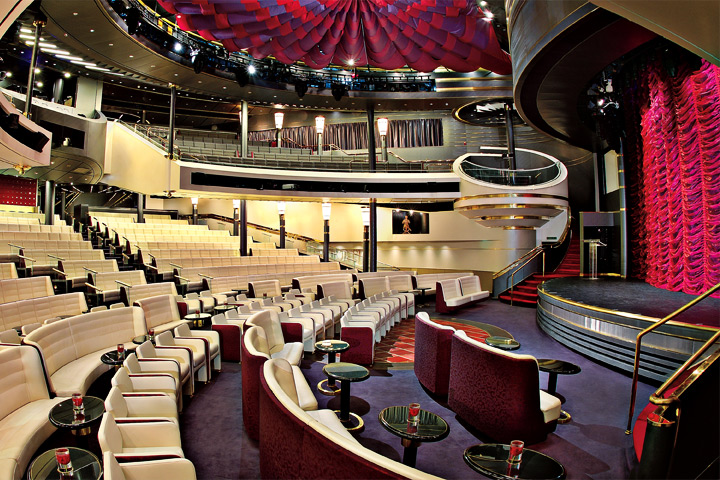
Show Lounge
- Card Room
- Casino
- Disco/Nightclub
- Movies
- Theater/Show Lounge
- Fitness Center
- Sauna/Steam Room
- Culinary Arts Center
- Educational Programs
- Pool - Outdoor
- Sports Facilities
- Whirlpool/Jacuzzi
- Art Gallery
- Bars/Lounges
- Library
- Children's Indoor Play Area
- Organized Age Specific Activities
- Teen Center or Disco
- Teen Programs
- Business Center
- Concierge Desk
- Duty-Free Shops/Boutiques
- Elevators
- Safe Deposit Boxes
Activities & Services (available for an extra fee)
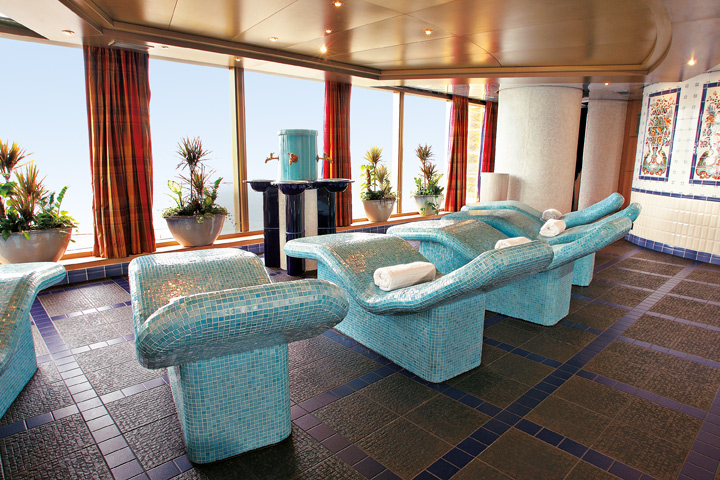
Full-Service Spa
- Beauty Salon
- Full-Service Spa
- Internet Center
- Babysitting
- Dry Cleaning/ Laundry Service
- Infirmary/Medical Center
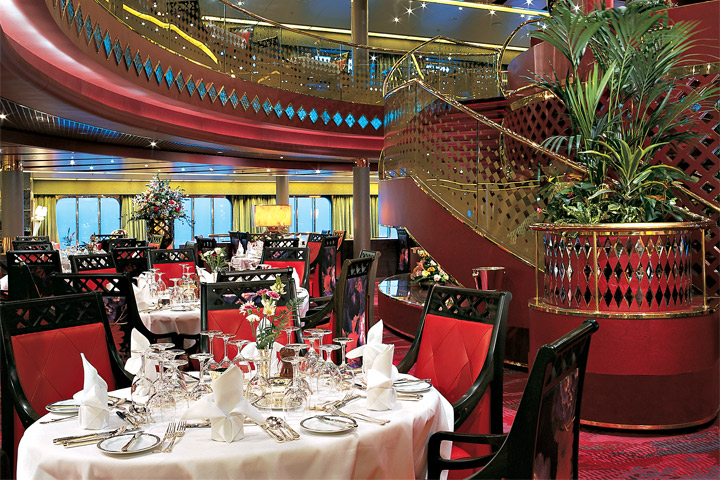
Dining Room
Main Dining
The Dining Room: For breakfast, lunch or an unforgettable five-course dinner, the elegant main Dining Room is your destination for sophisticated dining, with menu selections from classic favorites to vegetarian options, to dishes inspired by the regions you’ll visit. Menus by Holland America Line's Culinary Council® of world-renowned chefs.
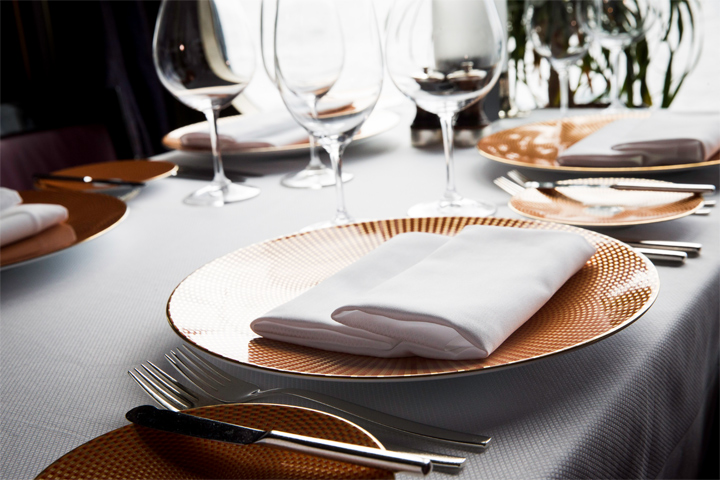
Pinnacle Grill
Specialty Dining
Pinnacle Grill: Enjoy dishes inspired by America’s Pacific Northwest, such as king salmon from Alaska and choice, responsibly raised beef from Washington State’s Double R Ranch. Complement your meal with a selection of boutique wines from the Pacific Northwest and other celebrated vineyards from around the world. This restaurant is available for an additional cost.
Canaletto: This authentic Italian restaurant offers a menu that celebrates spartire (Italian for "sharing"). Try braised chicken cacciatore "al forno," branzino ai ferri or a classic Italian pasta: spaghetti pomodoro or garlic shrimp-infused ravioli, perhaps. Buon appetito! This restaurant is available for an additional cost.
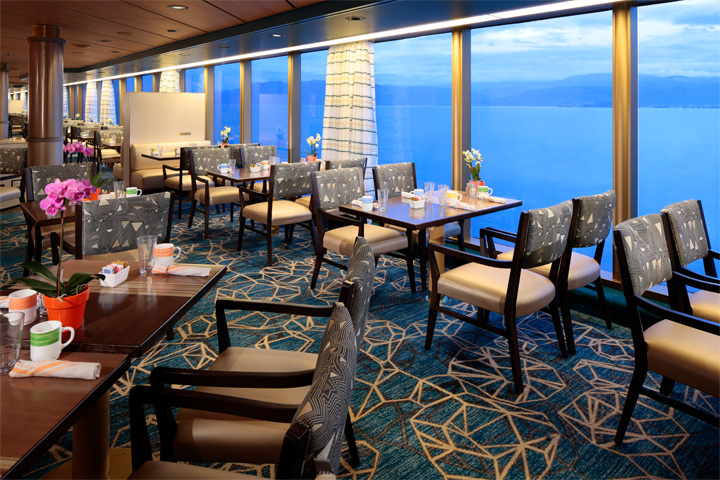
Lido Market
Casual Dining
Lido Market: Lido Market provides a fresh, new approach to casual dining for breakfast, lunch or dinner, with a panoramic view of the sea. A modern marketplace with different themed stations, the Lido offers a curated selection of delicious options to grab on the go or to have quickly made to order.
Dive-In: Dive in to a grilled burger on brioche or a Nathan’s Famous gourmet hot dog. For alfresco dining by the pool, Dive-In has it all, including lighter fare like the grilled chicken breast sandwich and vegetarian-friendly portabella mushroom stack.
Explorations Café: A comfortable, coffeehouse environment offering espresso drinks and pastries. This restaurant is available for an additional cost.
Room Service: Complimentary 24-hour dining in the comfort of your stateroom.
Staterooms feature premium massage showerheads, fine linens and fresh fruit upon request.
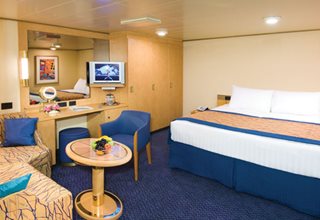
Category: N

Category: MM

Category: M

Category: L

Category: K

Category: J

Category: I
Elegant staterooms feature luxurious bedding, premium massage showerheads, a porthole or a window and fresh fruit upon request.
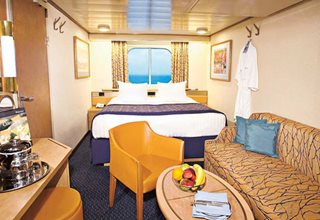
Category: HH

Category: H

Category: G

Category: F

Category: E

Category: DD

Category: D

Category: C
Spacious staterooms have a private balcony, whirlpool bath with shower and walk-in closet.
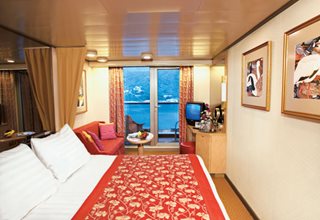
Category: VH

Category: VF

Category: VE

Category: VD

Category: VC

Category: VB

Category: VA
Luxurious suites feature a whirlpool bath, large sitting area, private balcony, floor-to-ceiling windows and more. Select suites feature a dressing room.
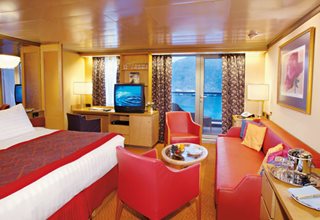
Category: SZ

Category: SY

Category: SS
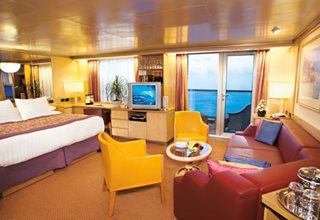
Category: SC

Category: SB

Category: SA
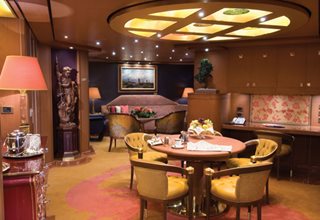
Category: PS

| Symbol | Description |
|---|---|
 | Quad (2 lower beds, 1 sofa bed, 1 upper) |
 | Triple (2 lower beds, 1 sofa bed) |
 | Partial sea view |
 | Fully obstructed view |
 | Shower only |
 | Single sink vanity |
 | Staterooms have solid steel verandah railings instead of clear-view plexiglass railings |
 | Suites SC6175 and SC6164 are fully accessible, bathtub and roll-in shower; Suite SS6108 and staterooms I8037, VB6004, VB6003, D1100, C1082, C1081, J1074, K1012, and K1011 are fully accessible, roll-in shower only |
 | Suites SY8068, SY5002, and SY5001 are fully accessible with single side approach to the bed, bathtub and roll-in shower |
 | Staterooms VA8032, VA8031, VA6049, VA5140, VA5137, VA5054, VA5051, VA4132, VA4131, H4090, H4089, VA4052, and VA4051 are ambulatory accessible, roll-in shower only |
 | Double (2 lower beds) |
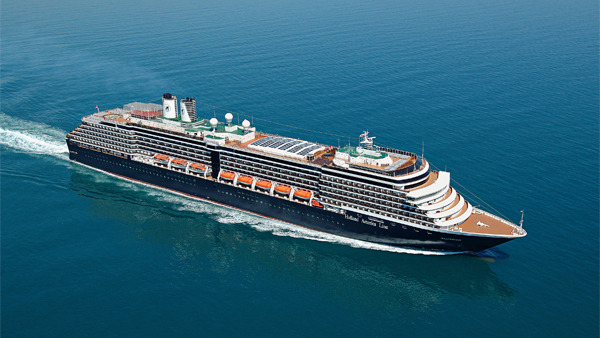
- Ship Name: Westerdam
- Year Built: 2004
- Year Refurbished: 2017
- Year Entered Present Fleet: 2004
- Ship Class: Vista
- Maximum Capacity: 2,504
- Number of Passenger Decks: 11
- Number of Crew: 817
- Officers' Nationality: International
- Ocean-View without Balcony: 165
- Ocean-View with Balcony: 477
- Total Inside Staterooms: 154
- Tonnage (GRT): 82,348
- Capacity Based on Double Occupancy: 1,916
- Country of Registry: Netherlands
- Total Staterooms: 958
- Suites with Balcony: 162
- Crew/Hotel Staff Nationality: International
Costco Member Reviews

Available Dates & Prices
Terms & Conditions
*Price shown is per person based on double occupancy and is valid for select stateroom categories only. Click on the Terms & Conditions link below for details.
†One Digital Costco Shop Card per room/stateroom, per stay. The exact amount of the Digital Costco Shop Card will be calculated during the booking process. The Digital Costco Shop Card promotion is nontransferable and may not be combined with any other promotion. A Digital Costco Shop Card will arrive by email approximately 10 days after the start of your cruise. Click on the Terms & Conditions link below for additional information.
Ship's registry: The Netherlands
Digital Costco Shop Card
Book this vacation or cruise with Costco Travel and receive a Digital Costco Shop Card. The Digital Costco Shop Card is a convenient payment option in our warehouses and on Costco.com.


















